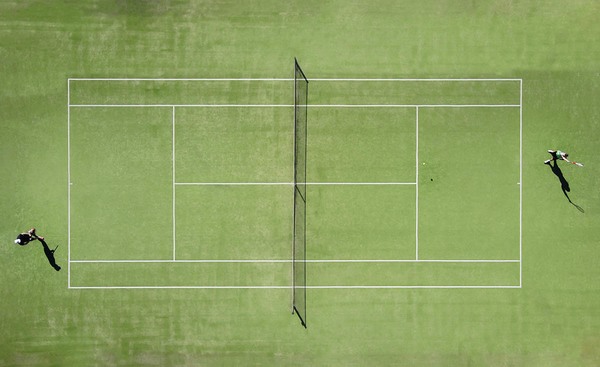Prep for Tennis Academy Success: Your Guide to Understanding the Court

Are you or your child gearing up to start sharpening your tennis skills this summer? Whether you’re exploring your options for the best tennis summer camps in Volusia County or starting beginner tennis lessons at our Daytona Beach facility, understanding the basics of the sport serves as a vital foundation you should never play without. So – let’s start with the court right under your feet and all the helpful things it can tell you about the game you’re about to play!
Tennis Court Basics
The tennis court is a rectangular space on which a game of tennis is played. The size of the court is specified and standardized by the International Tennis Foundation. It measures, in total, 78 feet long by 36 feet wide. The tennis net is plated at the center of the length of the court, dividing it into two 39-feet-long halves. This net stands 3 feet, 6 inches high at the posts, but 3 feet high at the center.
If you explore different tennis courts in different locations, you will find games being played on a variety of different court surfaces. Beyond hard courts, you’ll also find surfaces made from clay, grass, or even carpet – and these different types affect the play style and pace of the game.
Singles or Doubles?
While beginning your tennis lessons, you might have noticed a second set of interior lines, or tram lines, which run the length of the court. These two sets create one 36-foot length of the court, as well as a smaller, 27-foot-wide interior section at the center. Why is this?
Well, a tennis court can be utilized to play both singles (two players competing) and doubles (two teams of two players each competing) matches! This innermost section indicates the play area for a singles match – and that inner set of parallel lines is referred to as the singles sidelines. The full 36 feet length is utilized in a doubles match – and this extra space outside of the singles play area is referred to as doubles alley. If the ball falls within doubles alley in a singles match, the ball is out.
Services Lines Made Simple
The line furthest back on the court, parallel with the net is referred to as the baseline. This is a very important line, as you serve the ball from behind it! When you begin a game, you’ll serve from the right side of the baseline – also referred to as deuce court.
As you make your serve, you must pay attention to some other lines in the court interior. Directly before you, parallel to the net and baseline, is the service line. This line, along with the sidelines and a perpendicular center service line, splits the center of the court into four service boxes. As you make your serve, your tennis ball must land within the service box located on the opponent’s side, opposite from the side the from you are standing and serving. After each point, the server alternates sides of the court, and, thus, the service box into which he or she must serve.
Got that all down? If so, good! If not, that’s okay – there’s plenty of time to learn and gain the experience you need to become a great athlete. The best way to improve those skills is to immerse yourself in effective, results-driven training – and we’re here to help with beginner tennis lessons! Take your game to the next level at John Hudson Tennis Academy – your premier Daytona Beach tennis center for authentic instruction. We look forward to helping you build your skills and confidence on the court soon!